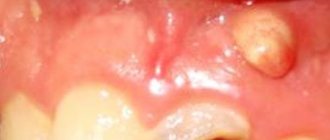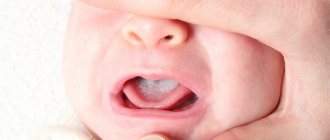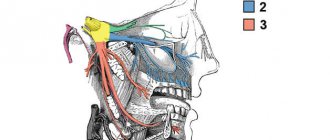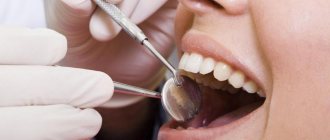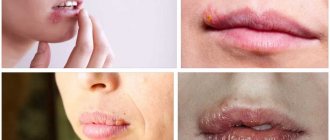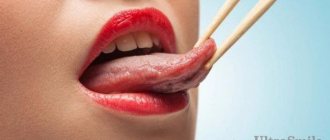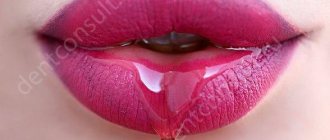September 23, 2021
Trigeminal neuralgia (facial or trigeminal neuralgia) is a disease of the peripheral nervous system characterized by short-term, intense and repeated pain in the area of innervation of one or more branches of the nerve.
Trigeminal neuralgia (facial or trigeminal neuralgia) is a disease of the peripheral nervous system characterized by short-term, intense and repeated pain in the area of innervation of one or more branches of the nerve. The nerve received its name due to the presence of three branches in it: ophthalmic (upper), maxillary (middle), mandibular (lower).
It is extremely difficult to independently diagnose pathology due to the nonspecific symptoms inherent in many diseases (for example, dental ones). That is why, if any unpleasant sensations occur in the facial area, it is necessary to promptly contact a neurologist. Trigeminal neuralgia most often affects adults, especially the elderly, and is more common in women.
The pathogenesis is not completely clear. It is currently believed that the disease occurs as a result of compression of the trigeminal nerve (at the site of its exit from the pons) by tortuous, pathologically altered vessels or, less commonly, by a tumor. As a result of compression, the nerve root adjacent to the cerebral pons undergoes demyelination. This reason explains up to 80-90% of cases of the disease. Rarely, patients with multiple sclerosis develop a plaque in the area of the sensory nucleus of the trigeminal nerve, which leads to neuralgia.
The factors that most often provoke the development of the disease include: pinching of the trigeminal nerve (temporomandibular joint injuries, congenital anomalies in the development of bone structures of the skull, tumors of the brain and facial area, pathological vasodilatation, etc.); viral nerve damage (herpetic infection, polio); odontogenic infections (“unsuccessful” filling or extraction of teeth or other surgical interventions in the face and oral cavity, reaction to anesthesia of dental canals, dental flux).
Causes and provoking factors
In fact, there are many reasons why the facial nerve may hurt. And hypothermia is simply the first thing that appears in the doctor’s memory. Main provoking factors:
- penetration of pathogenic microorganisms - both from the outside and from internal foci of infection, for example, caries, chronic sinusitis;
- tumor lesions of the nerve fiber – malignant/benign neoplasms of facial structures;
- injuries with damage to facial nerve fibers;
- circulatory disorders in the tissues adjacent to the nerve endings - can develop against the background of the fact that the muscles are cold;
- severe diabetes mellitus – with complications;
- neuroinfections suffered by a person - with damage to the structures of the nervous system.
In a number of situations, specialists are unable to establish the true root cause of the disease - taking an anamnesis does not allow us to judge the etiology of the pathology. When seeking consultation, the patient is recommended a set of diagnostic and therapeutic procedures - in accordance with the standards of pathology therapy.
How long does the anesthesia wear off?
Dentists use special types of anesthesia:
- using applications (in this case, the anesthetic is applied to the area treated with antiseptic substances in the form of a gel, ointment, solution);
- due to the conductor, that is, through injections (carried out for a long-term type of dental intervention, Novocain is used);
- infiltration (three-stage type, indicated for complex manipulations).
Experts have established a maximum threshold for each type of anesthesia and recommend closely monitoring how much time has passed since dental procedures were performed:
- numbness after application of anesthesia can last up to 30 minutes;
- after conduction – up to 5-6 hours;
- after infiltration – up to 3-4 hours.
The characteristics of the patient should be taken into account, such as age, weight, general health.
Symptoms
Differential diagnosis between diseases - the facial nerve is affected or the trigeminal nerve is cold, with symptoms, treatment and possible complications, can be fully performed exclusively by an experienced neurologist. Clinical manifestations may be largely the same.
However, if the facial nerve is cold, the main symptoms will be as follows:
- difficulty in facial expression on the affected side of the face;
- pronounced pain when performing movements of the cheek muscles;
- unpleasant sensations also occur in the area of the ears, eye orbits, and temples;
- disruptions in the functioning of the salivary glands;
- loss of appetite due to pain when swallowing food;
- inability to move the eyebrows, folds of skin on the forehead.
Symptoms of neuritis and symptoms of a cold may be present - weakness, weakness in the body, simultaneously with a rise in body temperature, chills, and headaches. It should also be taken into account that not only one cheek, but both sides of the face can be blown at the same time - unpleasant sensations are observed on both the right and left, since bilateral inflammatory foci occur in the fibers of the nervous tissue.
Numbness does not go away after dental anesthesia: find out where the problem comes from
Dental treatment is a serious challenge. There are risks of developing unpleasant consequences after improper filling or removal, and there is a possibility of complications after anesthesia. Treatment uses local blockade of pain impulses. In dentistry, anesthesia is used in the treatment of periodontitis, pulpitis, during prosthetics and implantation, during tooth extraction, during tissue extension or incisions. If numbness after dental anesthesia does not go away within the prescribed time, you need to look for causes and methods of elimination.
Diagnostics
The first step, what to do if you have a cold on the facial nerve, is to immediately consult a doctor at the clinic. After carefully collecting complaints and anamnesis - when the deterioration in health occurred, what preceded it and what actions the patient managed to take, the specialist will recommend a number of diagnostic procedures that will make it possible to make the correct diagnosis.
So, if your face hurts, then specially designed neurological tests will indicate damage to the facial nerve fiber - movements of groups of facial muscles in certain parts of the face. It will be difficult for a person to wrinkle his forehead or bare his teeth.
Basic hardware examination methods:
- electroneuromyography;
- electroencephalography;
- computed tomography/magnetic resonance imaging of the skull, especially the mastoid region.
In addition, if the eye or ear is blown, the specialist will prescribe clinical blood and urine tests and chest fluorography. Only after comparing all the information from laboratory and instrumental procedures and the results of a neurological examination, the doctor will select the optimal treatment regimen for neuritis.
Why doesn't anesthesia work on the tooth?
Every person is faced with the need for dental treatment at the dentist and deep in his soul hopes that any intervention will be painless. This is only possible if the anesthesia (“pain relief”) is 100% effective. But few people know that there are factors little known to the average person that lead to a difficult (even worse - absence) effect of this very anesthesia.
Having collected bit by bit these scattered reasons that concern many unsuspecting patients, I, as a dentist with extensive experience, created a useful informative article, written in a language that is simple for any person.
There are a number of reasons why painkillers may not work at the dentist:
- Poor quality drug. It may have been stored or transported incorrectly, or may have passed its expiration date.
- The doctor may play it safe and administer an insufficient dose. Then there will simply not be enough of it.
- The dentist may make a mistake in choosing a medicine. Each remedy has its own indications.
- When injected, the gum mucosa may be damaged. In this case, the drug may simply leak out without having time to be absorbed.
- Individual characteristics of the patient. There are people for whom certain anesthetics have virtually no effect.
- When an inflammatory process occurs at the injection site, anesthesia will not help.
- If the painkillers did not work during tooth extraction, the patient may be so stressed that he needs a larger dosage or took something sedative before the appointment.
The fact is that many people are terribly afraid of the dentist. Therefore, when they sit down in a chair, they begin to produce adrenaline at an accelerated pace. Anesthesia is often not used during dental treatment due to the influence of adrenaline. It raises blood pressure, increases heart rate and causes vasospasm. It is this spasm that interferes with the full effect of the medications.
There are situations when the patient relieves stress with a glass of alcohol before the appointment. The effect has been achieved - there is no fear, but the drugs have practically no effect when there is alcohol in the blood. Doctors also do not recommend using strong painkillers the day before your dentist appointment. They may interfere with anesthesia.
As funny as it may seem, painkillers practically do not help red-haired people. A mutation has occurred in their body, due to which local anesthesia is practically powerless.
How to treat a cold nerve
It is recommended to begin treatment measures if a person has a cold on the facial nerve - treatment is selected exclusively by a doctor on an individual basis, and is recommended immediately. A comprehensive scheme of influence on the affected area is required - medication and physiotherapeutic measures. It is necessary to eliminate the true root cause of the disease - for example, a chronic source of infection or negative production factors.
The main subgroups of drugs that will be used to treat a cold facial nerve:
- anti-inflammatory non-steroidal drugs - to reduce the area of inflammation and relieve pain;
- diuretics – removing excess accumulated fluid from tissues, reducing pressure on inflamed tissues;
- antioxidants - to increase the susceptibility of nerve endings to medications, improve the conduction of impulses through neurons;
- muscle relaxants - to eliminate spasms in muscle groups;
- vasodilators - correction of peripheral and general blood circulation in the affected area;
- analgesics – fight against pain.
Less commonly among medications than to cure the facial nerve, specialists prescribe hormonal drugs - in severe cases of the pathology. Physiotherapeutic procedures complement drug therapy well - infrared thermal effects, as well as magnetic therapy and acupuncture improve blood circulation, metabolic processes, and enhance pharmacological effects.
Symptomatic, local treatment - heat compresses and bandages on the affected area, for example, with beekeeping products, tinctures of medicinal plants - chamomile, calendula. After the main manifestations of the disease have subsided, therapeutic exercises will be indicated - the development of facial muscles and articulation.
Treatment
Numbness after anesthesia goes away on its own if no damage or disturbance has occurred. In case of complications after surgery, the help of a specialist is necessary if:
- numbness after treatment or removal does not go away after 24 hours;
- when removing a wisdom tooth - after 1-5 days.
The nerve is completely restored after 2-3 weeks. Associated symptoms should be taken into account. Shooting pain in the tooth, burning sensation in the gums, sagging tissue indicate disturbances that occurred as a result of the operation. Nausea or vomiting is a sign of poisoning in the body. In difficult cases, treatment is required.
Complications after the use of anesthesia are quite common. If the damage is not too complex, and the doctor’s recommendations are fully followed, then surgery can be avoided.
Medicines
To restore damaged nerves and normalize blood circulation, dentists prescribe:
- vitamin complexes containing vitamins B and C;
- Actovegin, Piracetam and other medications.
Folk remedies
At home, rinsing with oak bark and chamomile decoction is used to relieve inflammation. Valerian root is used in an infusion, as it has a sedative effect and relaxes muscles. Furacilin solution has proven itself well; it is used for rinsing.
It is not recommended to use heating or cooling yourself. Despite the feeling of relief in the first minutes, such procedures can cause harm.
Physiotherapy
Dentists resort to prescribing ultrasound therapy to warm up the designated areas. This promotes tissue restoration.
Complications and prognosis
Late seeking medical help or failure to comply with the recommendations of the attending physician entails the formation of complications of facial neuritis:
- paralysis of the facial muscles of varying severity - from mild asymmetry to the development of a pathological “mask”;
- complete weakening of the muscles of the facial part of the skull - a kind of “sliding” of muscle structures downward, drooping of the corner of the mouth, eyelid, eyebrows;
- distortion of taste perception – when part of the tongue is involved in the pathological process;
- sharp deterioration/weakening of auditory and visual activity;
- hemispasms - involuntary twitching of muscle groups.
However, in most cases, the prognosis of the condition, if the nerve has been frozen, is favorable - the disease can be successfully treated with complex treatment. The above complications occur rarely - only in people who are not committed to drug therapy prescribed by the doctor.
What should I do if I have a similar but different question?
If you did not find the information you need among the answers to this question, or your problem is slightly different from the one presented, try asking an additional question to the doctor on the same page, if it is on the topic of the main question. You can also ask a new question, and after a while our doctors will answer it. It's free. You can also search for the information you need in similar questions on this page or through the site search page. We will be very grateful if you recommend us to your friends on social networks.
Prevention
Like many neurological diseases known to specialists - infectious or cold etiology, facial neuritis is much easier to prevent than to deal with its manifestations later. Therefore, doctors have developed basic measures to prevent the disease:
- promptly identify and eliminate external/internal provoking factors - foci of infection, noise irritants, drafts in the workplace;
- avoid injuries and damage to the facial part of the head;
- eat right - the diet should consist of a predominance of fresh vegetables and fruits, dairy products, lean varieties of fish/meat, and seafood;
- adhere to an active lifestyle - visit the pool, often walk in the fresh air in the nearest forest park, go to the sea;
- avoid severe stressful situations, conflicts - it is better to change jobs, part with angry friends;
- harden up - strengthen the body with a contrast shower, taking courses of vitamins and minerals;
- drink at least 2–2.5 liters of clean water per day.
It has been noticed that people who get a good night's sleep are less nervous, eat right and dress according to weather conditions rather than fashion trends, and are less likely to suffer from the unpleasant symptoms of a cold facial nerve.
Consequences of anesthetizing a tooth into a nerve
Pain after injection. Could a muscle or nerve be hurt during anesthesia?
A month ago, my jaw ached below and above on the right, unobtrusively, just a little pulling. I went to the dentist 3 weeks later, found a hole in the top of the tooth, gave 2 anesthesia injections, treated it and sent it home. He told me to come back the next day if he still hurt. He said that all my teeth were in perfect condition and nothing should worry me. In the evening nothing changed, I went again. I found another tiny hole in the tooth from below, which went into the inner layer of the tooth and destroyed it from the inside. He performed a huge anesthesia, numbed the entire cheek, half of the tongue and half of the lip. When I injected it, it was more unpleasant than it should have been, as if I had hit it in the wrong place (a nerve/muscle). The tooth was healed and sent home. After 3 hours, the anesthesia wore off, but my jaw still hurt. By evening the pain became unbearable, stronger than it had ever been before. I decided that these were wisdom teeth and decided to go take a picture on Monday.

